Ordering number:24075
Wakizashi: Shirasaya with Koshirae (NBTHK Tokubetsu Hozon Token)
Signature: Suifu Ju Minamoto Norikatsu(Tokkatsu) Saku(First Generation)
Ansei 7 Nen 2 Gatsu Hi (Kokuin) (February 1860)
水府住源徳勝作(初代)
安政七年二月日刻印
We divide 4 sections for each sword as Saijyo Saku, Jyojyo Saku, Jyo Saku, and Regular Saku.
This sword is rated as Jyojyo Saku for works by Minamoto Norikatsu(Tokkatsu) (First Generation).
Habaki: Shakudo Habaki
Blade Length: 37.9 cm (14.92 in)
Curvature: 0.2 cm (0.08 in)
Mekugi Hole: 1
Width at Base: 3.05 cm (1.2 in)
Thickness: 0.69 cm (0.27 in)
Sword Weight: 705 grams
Era: Edo period, Ansei 7 (February 1860)
Shape: The blade is wide and thick, creating a sturdy appearance.
Jigane: The Masame-hada is well-forged, giving the surface a flowing look with beautiful texture.
Hamon: Nie-deki with small, rounded Gunome midare continues from the base to the tip, ending in a Komaru turn-back.
Features: The first generation Norikatsu(Tokkatsu), known as Katsumura Hikoroku, was a retainer of the Mito domain and a disciple of Tokumune. He studied under Hosokawa Masayoshi, Koyama Munetsugu, and Unju Korehide in Edo. This smith is famous for his Masame-hada, and this piece exhibits this feature prominently. The blade has chikei in the ha and works with sunagashi and kinsuji, creating a magnificent, timeless piece.
Koshirae:
Tsuba: Mokko-shaped brass with a design of a samurai chasing an oni (demon).
Fuchikashira: Shakudo with nanakoji ground and a chrysanthemum pattern.
Saya: Black lacquered scabbard.
Menuki: Shakudo with a chrysanthemum design.
Aoi Art’s Comment: Early works by the first generation Norikatsu(Tokkatsu) often feature this unique signature stamp, making this piece extremely rare. It is likely that only swords stamped in February 1860 bear this signature. Initially, it was thought to be the same as the piece in the Fujishiro Nihonto Koza, but slight differences in the script indicate it is a very rare piece. This signed piece, dated Ansei 7 Nen 2 Gatsu Hi, is the only one I have seen besides the one in the swordsmith dictionary. This makes it a very rare and valuable piece.
NBTHK Tokubetsu Hozon Token
Aoi Art Estimation Paper
Whole Oshigata
Order Form
Related Items:
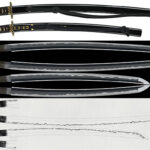 Dai Sho : Motohira(Dai Sho:NBTHK Tokubetsu Hozon Token)(Daisho Koshirae: NBTHK Tokubetsu Hozon Tosogu)
Dai Sho : Motohira(Dai Sho:NBTHK Tokubetsu Hozon Token)(Daisho Koshirae: NBTHK Tokubetsu Hozon Tosogu)
 Wakizashi:Omi Daijo Fujiwara Tadahiro(NBTHK Hozon Token)(NBTHK Tokubetsu Kicho Token)
Wakizashi:Omi Daijo Fujiwara Tadahiro(NBTHK Hozon Token)(NBTHK Tokubetsu Kicho Token)
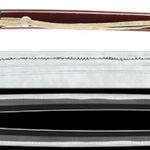 Wakizashi:Hoki Kuni Kurayoshi Ju Mita Sukejo Hiroyoshi(NBTHK Hozon Token)
Wakizashi:Hoki Kuni Kurayoshi Ju Mita Sukejo Hiroyoshi(NBTHK Hozon Token)
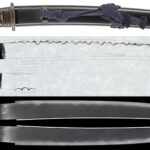 Wakizashi (Sunnobi Tanto) : Sakuyo Gohara Ju Nobushige(March 1859)(NBTHK Hozon Token)
Wakizashi (Sunnobi Tanto) : Sakuyo Gohara Ju Nobushige(March 1859)(NBTHK Hozon Token)
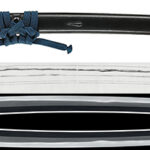 Wakizashi:Soshu Ju Ise Daijo Fujiwara Tsunahiro(Hozon Token, Tokubetsu Kicho Token)
Wakizashi:Soshu Ju Ise Daijo Fujiwara Tsunahiro(Hozon Token, Tokubetsu Kicho Token)
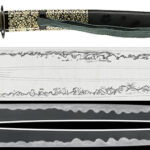 Wakizashi: Bizen Koku Ju Osafune Genbei no Jo Sukesada Saku Eiroku 11 Nen 8 Gatsu Kichijitsu (NBTHK Tokubetsu Hozon Token)
Wakizashi: Bizen Koku Ju Osafune Genbei no Jo Sukesada Saku Eiroku 11 Nen 8 Gatsu Kichijitsu (NBTHK Tokubetsu Hozon Token)







